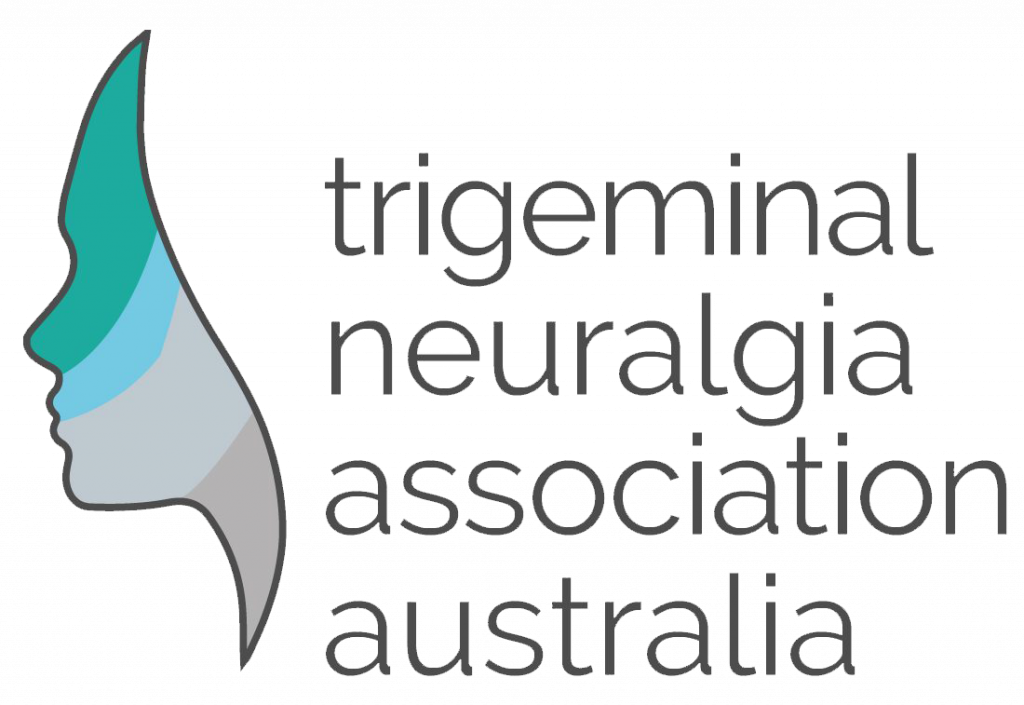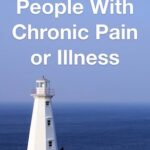How do you manage Chronic Pain in Relationships. So many carers feel helpless and often feel as isolated as the partner who suffers from chronic pain

Trigeminal neuralgia is an invisible infliction, onlookers may only notice a slight twitch as a sufferer attempts to compose themselves after a strike, or a hand pressed against a cheek to try and calm the pain or deflect the wind, or noticing the slowness in eating because every jaw movement brings on pain.
Just imagine you have been hit with a cattle prod under each of those scenarios and you may start to understand the level of pain

The Northern Pain Centre published this article on the subject, it is packed with great information and links to research and other related articles. Bookmark this article because we are sure you will refer to it often. The Northern Pain Centre is located at North Shore Private Hospital, Suite 6, Level 4/1 Westbourne St, St Leonards NSW 2065 and have a great resource library
Chronic pain is not just the physical “hurt” experienced by people living with it, it is all that the pain takes away from them, including the toll on their most important relationships. According to a study in the journal of Pain, chronic pain has a significant impact on a person’s social relationships and can be a key trigger for the development of anxiety, depression and anger. With 1 in 5 Australian’s living with chronic pain and over 60% of them suffering from anxiety or depression, the likelihood is that each of us knows someone dealing with the isolation and loneliness that comes from living with chronic pain.

Relationships
Humans are social creatures, from our birth until the day we depart, we seek out groups to feel connected (research link). This may be because, there is a belief that in numbers there is safety; or we feel “normal” when we are surrounded by people who are “like” us; or that being among those that are “unlike” us expands our thoughts and lives; or that we feel less alone in the struggles we go through when we have other to support us. What ever the reason, relationships are part of our foundation for health and well-being (research link) and they can come in many forms including, family, friends, colleagues and intimate partners.
What we have learnt from research, is that loneliness and isolation heighten our risk of almost every disease, both physical and mental. They also significantly impact on our life satisfaction, self-worth and life expectancy. They also plays a significant role in chronic pain.

Research has shown that there is a strong relationship between higher levels of social isolation, lower levels of physical function, and pain interference. Pain interference is defined as how well a person living with chronic pain, is able to face the challenges of performing daily, social and/or work-related tasks.
Relationships and Chronic Pain
In the movie Cast Away, Tom Hank’s character spends years on an island, alone. His only companion, a volley ball named “Wilson”. The immense despair felt when this inanimate object is lost, highlights the grief felt when any of us lose the relationships we hold most dear and find ourselves alone. This grief is all too common when living with chronic pain. The challenge with chronic pain is, often in an instant, the life and person that we have become accustomed too, all of a sudden changes.
For the person living with pain: they are left managing the physical, emotional and mental toll the pain takes on them. For the person watching: they are left struggling to understand how to help and support them, but often feeling helpless. For both people: each treatment and appointment raise the hopes of a cure, which can often lead to disappointment with the residual pain left behind. The true definition of chronic pain is that it is not curable. Its treatments are called pain management, because this is what they are, tools to manage and alleviate the symptoms of chronic pain, often not cure it. To learn more about this visit here.
Many people who live and manage chronic pain, find that life with pain has a significant impact on all their relationships. The causes of these changes to relationship can come in many forms, including:
- Misunderstandings about chronic pain and the toll it takes
- Misunderstanding about the incurability and chronicity of pain
- Compassion fatigue due to the ongoing nature of pain
- Changes to roles and responsibilities as a result of pain
- Changes to the physical, emotional and mental health and well-being of a person living with pain
- Changes to the health and well-being of the person not living with pain
Research suggests that issues in close relationships have a significant impact on the severity of pain experienced, the levels of physical disability and the levels of depression experienced. Whereas strong, healthy relationships have the inverse affect, reducing pain, disability and mental health issues. In this article we will take a look at how chronic pain affects relationships and some strategies that can be put into place to help repair and rebuild those relationships. From family, to children, to being single, we hope this brings about some strategies for helping nurture your relationships.

Family
Families are more than a group of people united by blood or ceremony. They are a group which share a bond of common values, common goals, roles and responsibilities. Families contribute to the physical, emotional and mental well-being of each of its members. They provide a network and team that spans the generations; providing safety, security and love. This is often why, when a previously “healthy” person becomes changed by pain, it has a dramatic impact on the whole family unit.
Often what family members will notice is that the person living with pain starts to pull away from their previous life and those that were a part of it. Their loved one may become isolated; the only outings often revolving around healthcare appointments. Their loved one may experience side-effects relating to treatments, which can change their mood and behaviour. Their loved one may change from who and what they once were; with pain dictating their energy, mood and behaviour. The ripple out effect of pain changes work, finances, activities – both social and physical, and relationships.
Family members may play a role in positive reinforcement of unhelpful coping strategies, thinking patterns and behaviours (research link). This comes from a place of wanting to help, protect and look after the pain-affected family member, but often leads to increasing levels of pain intensity and disability (research link) and decreasing levels of autonomy, self-efficacy and self-confidence.
For the pain-affected person: feelings of guilt, shame and grief are quite normal. They may feel like the pain has taken control of every aspect of their life, spinning their world out of control. The pain has become a thief, constantly stealing pieces of the life they have spent years building. They very likely, feel the toll their pain takes on their family, and the burden this places on their loved ones, but feel helpless to change this.
Tips for Family
The following are a few strategies that may help families to adapt to the changes in their loved one:
- Learn about chronic pain – with knowledge, comes greater understanding. Learning about your loved one’s pain, helps create a greater empathy and understanding of why and how it affects them. By attending appointments, seeking support and talking openly about pain, you can show support, empathy and love for what they are going through.
- Ask, don’t assume – ask what you can do to help, ask what your loved one needs, ask what your loved one is feeling. Asking questions, helps each of us to understand the perspective of another. Without asking, we can never truly understand what is going on and how we can help in an effective way.
- Be a team – change and share the load of responsibilities. Everyone wants to feel useful and have purpose, but when it comes to chronic pain, we often need to set our loved ones up for success. This means allocating responsibilities that can be modified and broken down into smaller tasks, and also have no time-frame attached and can be gradually worked towards over longer periods of time.
- Keep asking – don’t stop inviting them or including them. Just asking your loved one to come or be involved, helps them to feel a part of the family. They may say no, but the offer opens the possibility of a life outside of their pain.
- Check in on them – just showing your loved one that you care, that they matter and that you are here for them, helps to break the cycle of isolation and loneliness. Asking how they are, how their appointment went or if you can do anything to help, lets them know they are not in this on their own and they have support.
- Encourage independence – encourage your loved one to maintain their independence as much as possible. This not only allows them to maintain their self-confidence, but also their sense of self-efficacy and purpose.
Singles
Living with chronic pain can be incredibly lonely and isolating, particularly for those who are single. The toll pain takes, can lead to an ever-reducing circle of friends and family. The cause of these changes can come from: others and their misunderstanding or from the pain-affected person.
Friends may struggle with the loss and change to the relationship that they had become accustomed to. Their misunderstanding of chronic pain and its incurability, may lead to compassion fatigue. Their misunderstanding of the unpredictability of pain, may lead them to stop including or inviting their friend. Their discomfort with watching their friend suffer, may lead them to pull away.
For the person living with pain: the loss and change to themselves may lead them to withdraw. Their inability to participate in social activities, such as sport and work, may lead them to stop these activities all together. The changes to identity and self-esteem may lead them to avoid contacting friends and families due to the fear of rejection. This avoidance and withdrawal can result in limited offers to socialise, leading to feelings of resentment, jealousy and grief from what has been lost as a result of pain.
Often chronic pain can also change weight, energy, feelings of attractiveness and perceived capabilities, this can cause a pain-affected person to withdraw further into themselves. For a person living with pain the cycle of withdrawal-isolation-pain can lead to the negative spiral which removes the thought or possibility of meeting new friends or a potential partner.
Tips for Singles
Being single can be a daunting experience for anyone, especially when living with chronic pain. It can mean relying more heavily on family and friends for support, even potentially moving back home to live with parents. Many single people also worry about how they will build a new relationship living with chronic pain; they’re concerned that no one would take on this level of challenge at the start of a relationship.
Spending time learning about chronic pain, yourself and your body, can be a positive first step. This time alone can help singles to learn what they want and need from a partner, by learning about themselves and how their pain affects them. It also provides an opportunity to learn how to manage your thoughts and feelings about your pain, without the judgement of another watching. Some strategies that can help include:
- Learning self-compassion (resource link)
- Learning new coping strategies (eBook link)
- Learning self-care strategies (eBook link)
- Managing stress (resource link)
- Managing the constant changes of life with chronic illness (eBook link)
- Understanding the shifts in self and identity (eBook link)
- Overcoming grief and loss (eBook link)
Finding support and connection with like-minded people can be a good introductory step for re-engaging in the world. Support groups offer a safe space, with empathetic people. These groups offer a world that understands and acknowledges the struggles faced by people living with chronic pain. It also opens up the possibility of new friendships, in a non-judgmental forum. For a list of support groups visit here.
Research into chronic pain has shown that building social connections through groups, can help reduce pain, increase function and improve quality of life. Some groups include, exercise groups, art or hobby groups, religious or community groups, voluntary organisations, and support or common interest groups. With the changes which have occurred in 2020 as a result of COVID-19, many of these groups are now available in digital platforms, making accessibility more available. Learn more about this here.
Finding meaning and purpose that utilise strengths, skills and interests, despite pain, helps people living with chronic pain to re-engage with social connections. Research shows that social connections lead to improved self-confidence and self-esteem, improved sense of control and ownership over life, improved well-being (including sleep and weight), decreased levels of depression and anxiety, and a more positive view of the world. For a full list of courses, community engagements and volunteering opportunities, visit here.
Partners
When chronic pain affects a partnership, the plan and focus of a relationship can alter dramatically. Whether watching, or being the pain-affected person: grief can set in, mourning the person and life that once was. To learn more about this visit here.
For the partner watching their pain-affected loved one: the changes to roles and responsibilities can lead to many challenges. This partner may take on greater ownership of household duties and care taking roles. They may become the sole provider, owning a greater level of the financial responsibilities. They may take on a greater portion of housework, leading to feelings of resentment or unfairness. The ongoing nature of chronic pain, can lead to feelings of anger, frustration and withdrawal from their relationship. Learn more about coping with persistent pain here.
The challenge for a partner is that they often also become a caregiver to their pain-affected loved one. They share the highs and lows of this pain journey, often feeling helpless, and being on the receiving end of the pain-affected persons anger, frustration and withdrawal. They can also take on additional physical and emotional load, and this can take a toll on their health.
Find help
For the person living with pain, they can feel the guilt and shame of not being who they once were in their relationship. They feel the loss of the roles, meaning and purpose they once held in their relationship. They feel the responsibility for the burden they have now handed to their loved one. The toll pain takes on their emotional, mental and physical health, can lead to unpredictable moods and behaviours, which can cause an even greater downward spiral. To learn more about changes to identity and self visit here.
Changes to relationship which can cause a breakdown can include:
- A reduction in quality “couple” time, including fears about attractiveness, intimacy and leisure
- Changes to once shared goals and plans
- Changes to the balance and distribution of housework, roles and responsibilities
- Feelings of resentment for the capabilities and perceived freedom of the partner not living with pain
- Withdrawal from the relationship and friendships
- Increasing disagreements due financial pressures, caring for children etc.
Research shows that disability, mood and adjustment to life with chronic pain is strongly linked to significant others and the empathy, intimacy and coping behaviours displayed within their relationship. This is why repairing, rebuilding and learning coping strategies to move through chronic pain, is incredibly important. To learn more about coping strategies visit here.
Find help
- Website: Relationships Australia (link)
Tips for Partners
Partners are better carers when they prioritise their self-care. Self-care can involve ensuring enough exercise, eating a well-balanced diet and seeking support. Taking this “time-out” to look after themselves, refreshes their physical, mental and emotional energy for their caring role. Caring for themselves also manages their stress levels and reaction to the situation.
Research suggests support groups, either in-person or online, can provide a valuable outlet to communicate with others in similar situations, allowing an opportunity to vent pent-up feelings, learn from others and gain practical advice, in a safe space (research link).
Research suggests that some of the best ways to support your loved one through their pain involves promoting independence; encouraging positive strategies like activity, self-advocacy, self-confidence and well-being; promoting the things that they can do and allowing them to do them in their own time; and sharing positive pain behaviours like coping strategies, pacing, regular activity, meaningful engagement, a well-balanced diet, good quality sleep, stress management and relaxation strategies.
Strategies for rebuilding and repairing relationships include:
- Education on chronic pain
- Education on pain management strategies
- Open, honest communication
- Reducing criticism and judgement
- Working on empathy and compassion (both for yourself and partner)
- Planning and setting goals together, this can include housework division, exercise and activities that meet both your needs
- Stepping back and allowing the person living with pain to try things
- Focusing on things outside of pain, particularly fun, leisure and intimacy
- Dealing with emotions in an assertive and constructive way
- Dealing with challenges and problems proactively as they arise
- Showing appreciation for the support and presence of your loved one in your life
- Learning psychological and relational flexibility (accepting what is, as opposed to what was or could have been)
Repairing relationships takes a level of acceptance and acknowledgement of what has led to the damage in the relationship. It also means consciously choosing to do things differently. Being honest about how pain has changed your relationship and each other. This can cause a period of grief; mourning the life you both had been building towards. But it also opens the possibility of a stronger bond and more resilient future. Get help repairing relationships here
Learn more
- Article: What happens when partners fight chronic pain together? (link)
- Article: Love: a powerful solution to chronic pain (link)
- Article: How my husband and I make our marriage work, even with chronic illness (link)
- Article: The unseen burden of chronic pain on intimate relationships (link)
Children
Being a parent is far from easy. But then add chronic pain and the role becomes almost impossible. Whilst children look to their parents for safety, security and unconditional love; parents feel a sense of responsibility and ownership for the life and happiness of their child. A parent that lives with physical pain, feels the emotional pain of not being all they thought they would be in their child’s life.
Depending on the age of children, the loss they feel due to their pain-affected parent may be shown in many different ways:
- A loss of independence
- Behavioural difficulties at school, with friends and siblings
- Mood swings
- Withdrawal or isolation, which may include distancing themselves from pain-affected parent
- Increased dependence on parents
- Taking on the role of a carer or guardian to the pain-affected parent
For the pain-affected parent: feelings of guilt and responsibility for their child’s response can be very normal. The parent might look too short term means to alleviate the emotional pain in their child. This can often, leads to bigger, long-term issues, including unhelpful behaviour and poor mood. To learn more about this visit here.
Find help
- Website: Kids Helpline (link)
Tips for parents and children
For younger children, reminding them that you are well despite the pain you’re experiencing can help to alleviate some of the fear felt. Teaching them about pain, it’s unpredictable nature and pattern, and how they can help you manage it can help to normalise the situation and include them in its management.
For older children, teaching them about pain and being honest about the toll it takes, can help them not to get stuck in downward spirals of worry. Strategies such as: including them in your pain management plan, doing things together, asking them for help and using them as motivation, can assist with creating a united, open, positive, team approach to proactively managing pain.
For parents living with pain: it is important to remember that life is not easy and teaching your children about resilience and perseverance through hardship, are invaluable lessons. Remembering that children do not need a perfect parent. In its simplest form, children just need love, care and time, gifts that pain cannot take away.
A final note, it can be helpful to speak with your local GP about any issues you are experiencing with relationships. They can organise a mental healthcare plan and referral to a psychologist to help you with strategies for managing pain and its effects on your relationships.
https://princessinthetower.org/the-isolating-loneliness-of-chronic-pain-invisible-illness/
transition-in-chronic-illness-relationships-chronic-pain-australia








